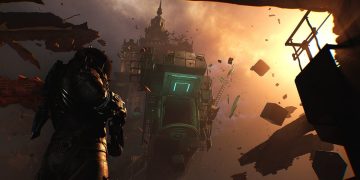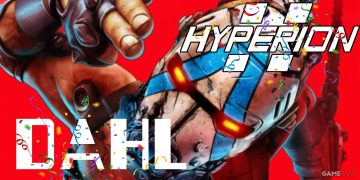The science fiction genre has roots stretching all the way back to the early 19th century with Mary Shelley’s “Frankenstein” in 1818. Over the years, sci-fi has evolved into numerous subgenres, each with its own unique twist. One fascinating offshoot is historical sci-fi, which blends futuristic elements with authentic historical settings. Films like “Back to the Future 3,” “11.22.63,” “Prey,” and superhero flicks such as “Captain America” and “Wonder Woman” all fall under this category. These narratives often explore alternate histories, where our familiar timeline takes a surprising detour for various imaginative reasons. “STALKER 2” embraces this concept wholeheartedly.
It’s been over ten years in the making, but “STALKER 2” seamlessly picks up the narrative thread from its predecessors. Sticking to the historical sci-fi setting that fans love, it demonstrates how this approach can elevate a modern open-world sci-fi game to new heights.
“STALKER 2” cleverly utilizes the infamous 1986 Chornobyl disaster as the foundation for its sci-fi universe. In the game’s narrative, the explosion wasn’t just a tragic accident but a result of Soviet experiments with the enigmatic Noosphere, a mysterious field enveloping the Earth that stores human emotions and thoughts.
Though the game mirrors some real-world events, such as the fall of the Soviet Union in 1991, it diverges with a second Chornobyl disaster in 2006, triggered by ongoing secretive experiments. This event transforms the game’s world, expanding the Zone, causing bizarre mutations, and creating physics-defying anomalies. This dangerous new world lures treasure seekers, or “Stalkers,” who venture into the Zone hoping for fortune and answers.
When crafting a video game, setting is paramount—it’s the backbone for the atmosphere, narrative, and characters. While sci-fi games often introduce players to intricate new worlds, this can sometimes bog down the storyline. However, the best games manage to immerse players without the need for lengthy backstories or complex lore dumps.
“STALKER 2” ingeniously sidesteps this challenge by anchoring its universe in a well-known historical event. Many are already familiar with the Chornobyl disaster, and even those who aren’t can grasp the essentials through contextual hints. This historical backdrop effortlessly sets the stage for the game’s sci-fi elements, providing players with a clear understanding of what they’re diving into.
Moreover, this historically grounded sci-fi setting amplifies the game’s survival elements, adding a tangible sense of realism that draws players deeper into the experience.
Set in a drastically altered post-2006 explosion world, the Zone is rife with lethal mutants, strange anomalies, and warring factions, all of which create a formidable survival challenge. Despite its dangers, the Zone holds incredible artifacts that attract those daring enough to search for them, each hoping to uncover the truth hidden in the Heart of Chornobyl.
With “STALKER 2,” players take on the role of a lone stalker, navigating a photorealistic, seamless open world stretching over 64 square kilometers. Packed with diverse environments, the game demands you to forge your path in this richly branched story. You’ll encounter various factions, decide alliances, and engage in gunfights with opponents employing different tactics. Choose from over 30 weapon types, modify to your heart’s content, and create hundreds of unique lethal combinations. Available on Xbox Series X and S, as well as Microsoft Windows, and powered by Unreal Engine 5, “STALKER 2” is a captivating blend of history and fiction that promises an epic gaming journey.








![[FREE Game] Ruffy and the Riverside Giveaway (PlayStation 5 – North America) [FREE Game] Ruffy and the Riverside Giveaway (PlayStation 5 – North America)](https://www.intergamerz.com/wp-content/uploads/2025/06/FREE-Game-Ruffy-and-the-Riverside-Giveaway-PlayStation-5-–-360x180.jpg)



![[Title Rewrite] [Winners of FREE GAMES Giveaway] Hook: Complete Edition for Nintendo Switch [Title Rewrite] [Winners of FREE GAMES Giveaway] Hook: Complete Edition for Nintendo Switch](https://www.intergamerz.com/wp-content/uploads/2025/06/Free-Game-Offer-Hook-Complete-Edition-Giveaway-for-Nintendo-Switch-360x180.jpg)


































